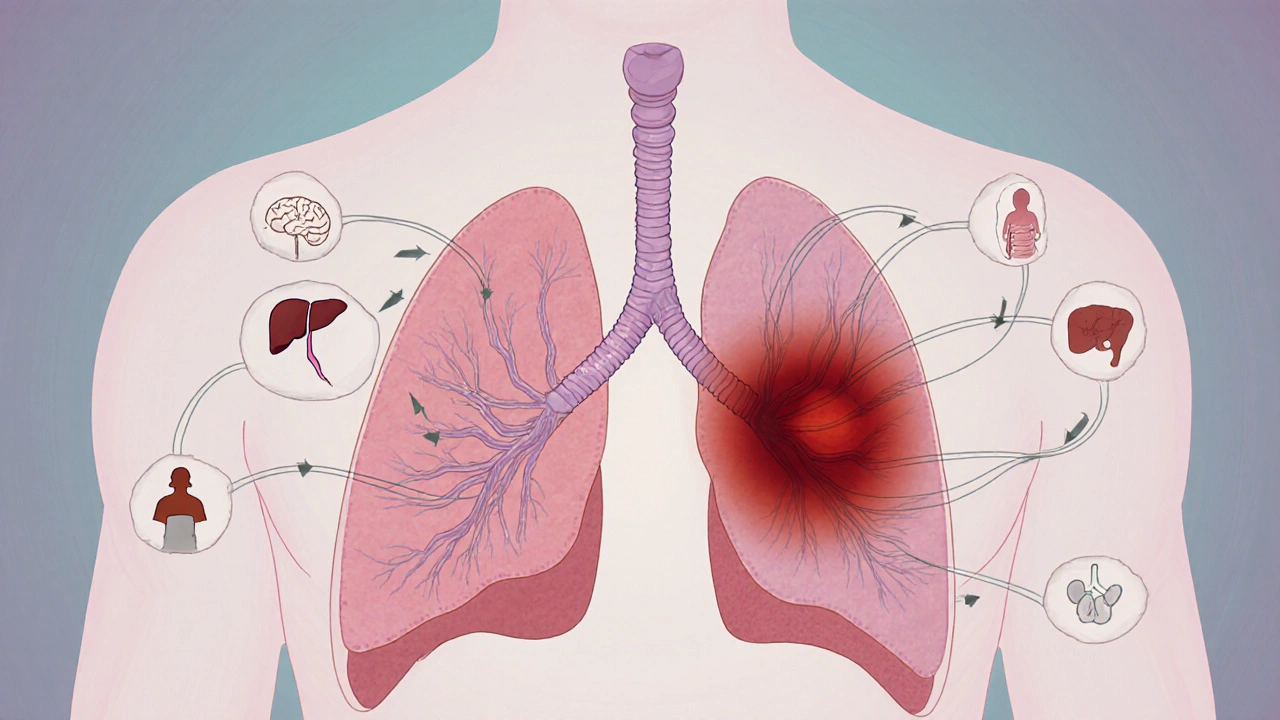Stage 4 Cancer Statistics: What the Numbers Really Show
When looking at stage 4 cancer statistics, the data that tracks how often patients survive, how long treatment lasts, and what factors influence outcomes. Also known as advanced‑stage cancer data, these figures help doctors, patients, and families see the big picture beyond a single diagnosis.
Understanding stage 3 cancer, the stage just before the disease spreads to distant organs is key because it sets the baseline for how survival rates drop as cancer progresses. Cancer survival rates, the percentage of patients alive after a set number of years post‑diagnosis give a concrete way to compare stage 3 and stage 4 outcomes. The shift from localized to distant spread usually cuts the five‑year survival by half or more, depending on the cancer type.
Why the Numbers Matter
First, stage 4 cancer statistics tell you how many people live long enough to try newer therapies. For example, the 2023 Indian registry showed a 15% five‑year survival for metastatic lung cancer, up from 10% a decade ago thanks to immunotherapy. Second, these stats influence insurance decisions, research funding, and public health policies. When governments see a rise in survival for a specific cancer, they often push for wider screening programs.
Third, the data shape cancer treatment, the mix of surgery, radiation, chemotherapy, targeted drugs and immunotherapy used for advanced disease. Advanced‑stage patients usually need combination regimens, and the success rates of those combos appear directly in the statistics. For instance, adding a checkpoint inhibitor boosted the median overall survival for stage 4 melanoma from 9 months to 23 months.
Finally, the link between terminal cancer, cases where the disease cannot be cured and care focuses on quality of life and stage 4 stats is often misunderstood. Not every stage 4 patient is terminal; many live years with controlled disease. The stats help separate the myth that stage 4 equals immediate death from the reality that outcomes vary widely.
So how do you read the numbers? Start with the incidence rate – the number of new stage 4 diagnoses per 100,000 people. Then look at the median overall survival, which tells you the typical time a patient lives after the advanced diagnosis. Next, check the five‑year survival percentage for a specific cancer type; that’s the gold standard many patients ask about.
Age, gender, and lifestyle also play into the figures. Younger patients often have better outcomes because they tolerate aggressive therapies. Meanwhile, Indian studies show that women with stage 4 breast cancer have slightly higher five‑year survival than men, likely due to earlier detection of hormone‑driven subtypes.
Geography matters too. Urban centers with access to clinical trials report higher survival numbers than rural areas. The disparity isn’t just about hospitals; it’s about how quickly patients get diagnosed and start treatment. A 2022 report from Mumbai showed a 7% survival boost when patients began targeted therapy within three weeks of stage 4 confirmation.
Another important metric is progression‑free survival (PFS). PFS measures how long a treatment can keep the cancer from growing. For many stage 4 cancers, a longer PFS translates into better quality of life, even if overall survival doesn’t change dramatically. The latest data for metastatic colorectal cancer shows a PFS of 8.5 months with a newer combination therapy, compared with 5.2 months for older regimens.
When you compare stage 4 with stage 3 stats, you’ll notice a steep drop in both overall and progression‑free survival. That drop isn’t inevitable; ongoing research is narrowing the gap. Immunotherapy, CAR‑T cells, and personalized medicine are all pushing stage 4 numbers upward, sometimes approaching stage 3 outcomes for certain cancers.
It’s also worth noting that survivorship data is improving because of better supportive care. Pain management, nutrition, and mental health services extend life and improve the days patients have. A 2024 Indian palliative‑care study linked early psychosocial support to a 12% increase in median survival for stage 4 pancreatic cancer.
All these pieces – incidence, median survival, five‑year rates, PFS, and supportive care – form a web of stage 4 cancer statistics that tells a more hopeful story than the headline “advanced cancer.” The numbers show progress, gaps, and where new research should focus.
Below, you’ll find a curated collection of articles that dive deeper into specific cancers, treatment breakthroughs, and real‑world tips for navigating a stage 4 diagnosis. Whether you’re a patient, a caregiver, or just curious about the data, these pieces will give you practical insights backed by the latest statistics.






